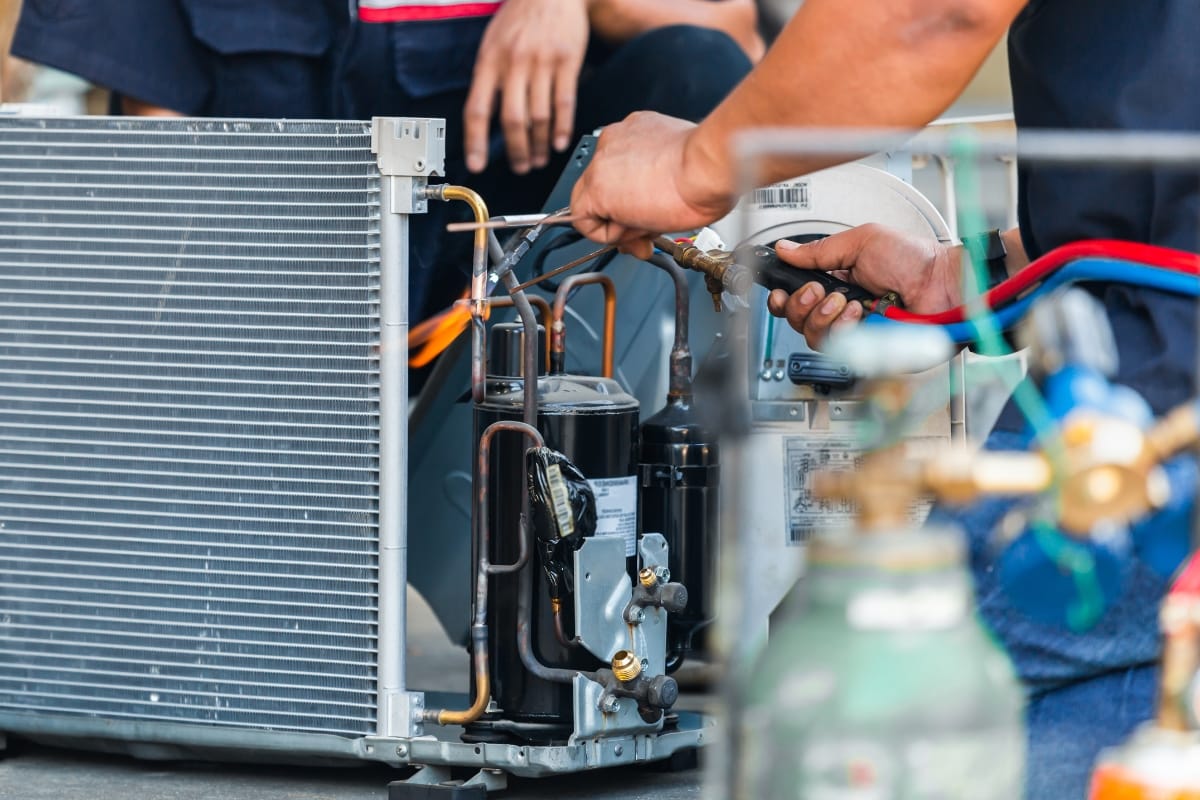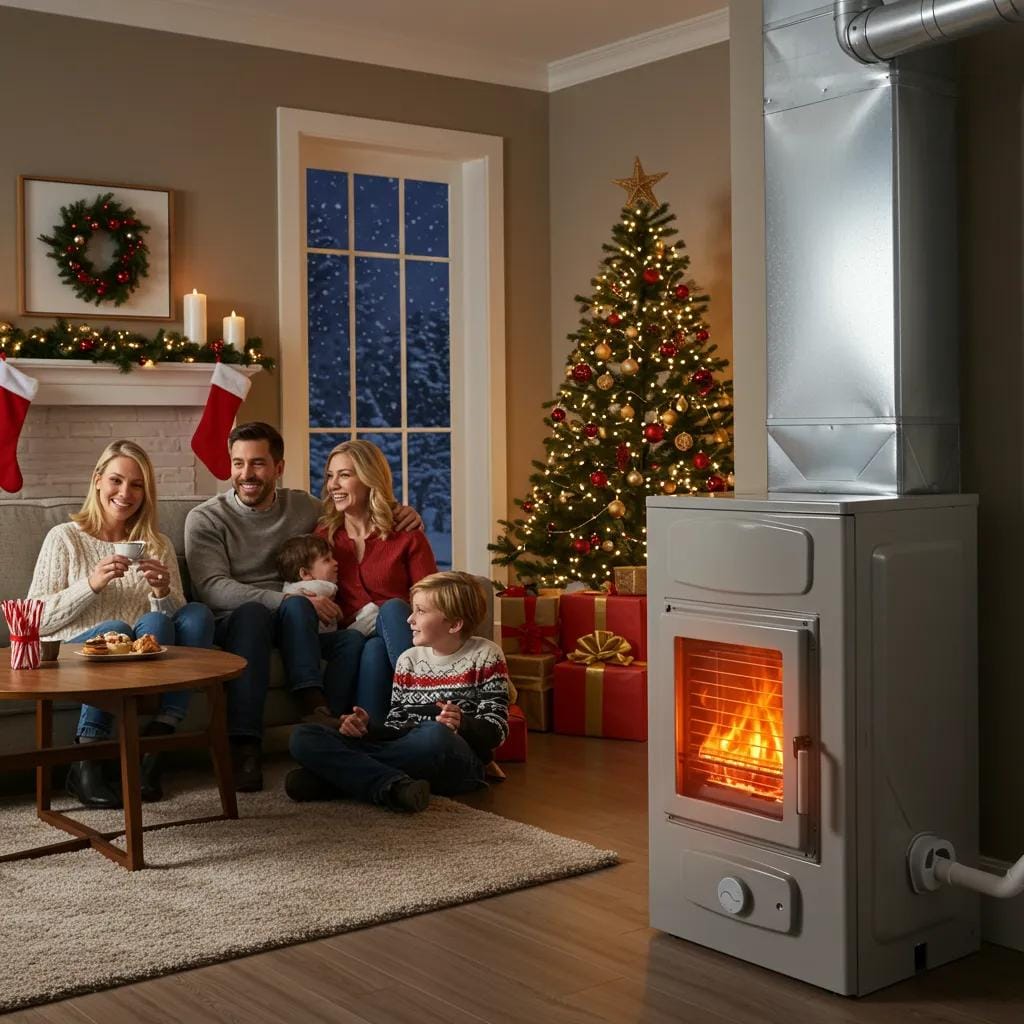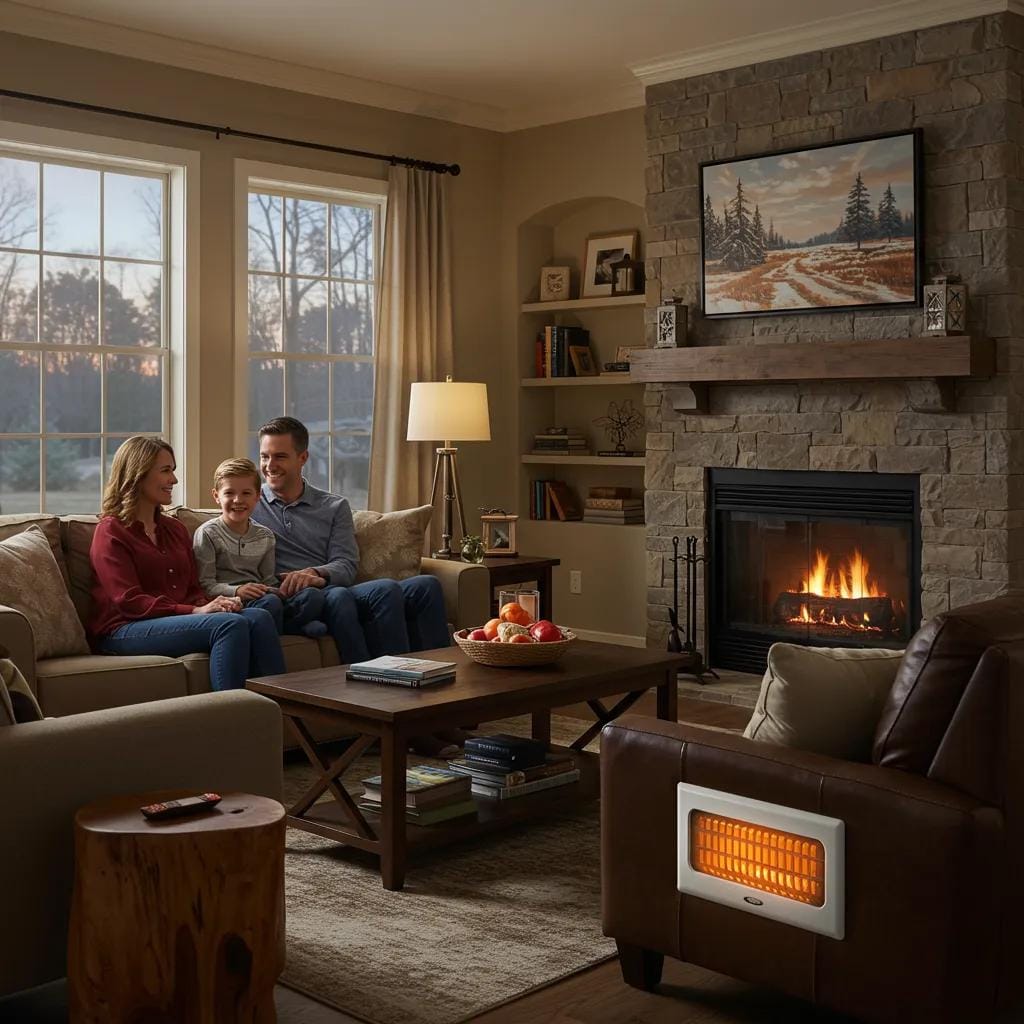Are you worried about how much furnace repairs might cost? Understanding what affects the cost of furnace repairs can help you make informed decisions.
This post will explore the age of your furnace, its repair history, and the type of fuel it uses—key factors that influence repair costs. By the end, you’ll have a clearer picture of what to expect, allowing you to better manage your heating expenses and keep your air conditioning in top shape.
Let’s tackle the common pain point of unexpected costs and arm you with the knowledge to handle any furnace issues efficiently.
Cost of Furnace Repairs: Avoid Unexpected Expenses with These Tips
Examine the Age of Your Furnace and Its Impact on Repair Costs
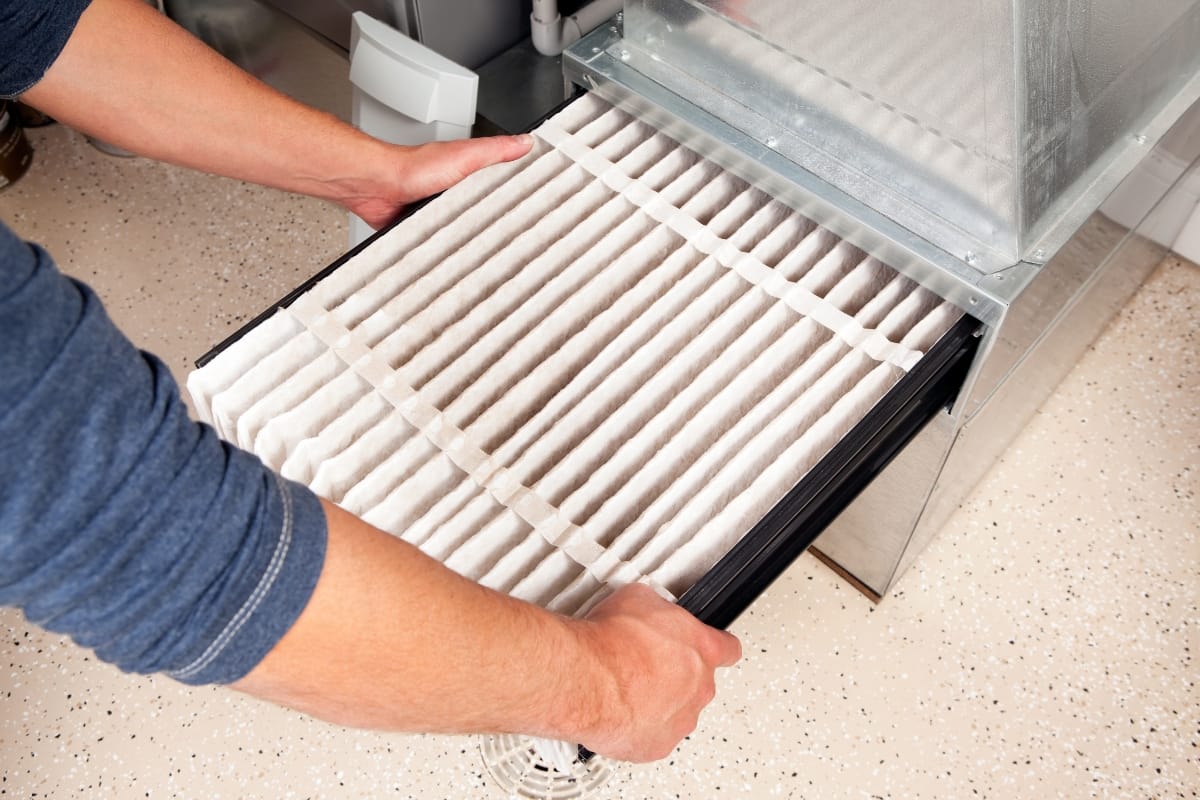
Your furnace‘s age plays a significant role in determining repair costs. As components like the air filter and thermostat wear out, you may notice a rise in expenses.
Common signs such as strange noises or uneven heating indicate age-related issues. It’s also essential to assess the lifecycle of your furnace model, as this can affect both repair price and efficiency.
Understand How Aging Components Increase Repair Expenses
As your furnace ages, its components can start to wear out, and this often leads to increased repair costs. For example, a failing thermostat or a worn-out heat pump can lead to inefficient heating, causing you to spend more trying to keep your home comfortable.
If you experience a leak from your system, addressing it quickly can help avoid even larger expenses down the road, especially if it leads to water damage or requires extensive repairs.
Considering your budget is key when dealing with an aging furnace. High repair costs for older models may tempt you to tap into a home equity line of credit, but weigh the benefits against the potential need for a new unit.
Investing in updating your heating system might actually save you money in the long run, as newer models are generally more efficient and reliable, reducing those pesky repair bills.
Recognize Signs That Indicate Age-Related Failures
If your furnace starts making odd noises or fails to distribute heat evenly, these could be signs it’s aging and requires attention.
Look out for changes like room temperatures fluctuating or a sudden increase in your utility bills, which may indicate inefficient heating. If you notice any gas leaks, it’s crucial to act immediately, as this can pose serious safety risks and lead to higher repair costs.
Also, consider the importance of your warranty. If your furnace is nearing the end of its coverage period, weigh the benefits of using a home equity line of credit for repairs against potentially investing in a new, more efficient unit.
Upgrading to a smart thermostat can also help, allowing you to monitor and optimize your heating usage to reduce overall expenses.
- Odd noises from the furnace
- Uneven room temperatures
- Increased utility bills
- Potential gas leaks
- Warranty considerations
- Using a line of credit for repairs
- Upgrading to a smart thermostat
Assess the Lifecycle of Your Specific Furnace Model
When considering the lifecycle of your specific furnace model, understanding its annual fuel utilization efficiency (AFUE) is key. Different types of furnaces, whether they run on oil, propane, or gas, have distinct efficiency ratings that can directly impact your heating costs.
For instance, an older model with a lower AFUE might require more fuel to produce the same amount of heating measured in British thermal units (BTU), leading to increased expenses over time.
Additionally, keep an eye on the specific components of your furnace, like the pump or heat exchanger. If these parts show signs of wear, you’ll want to decide quickly whether to repair or replace them based on your furnace’s age and efficiency.
Investing in a more modern furnace can bring peace of mind with better efficiency, which ultimately helps keep repair costs lower down the line while ensuring your home stays comfortable.
A furnace‘s age tells part of its story, but past repairs reveal more. Understanding how often it has needed fixing can shed light on what lies ahead for your wallet.
Evaluate the Frequency of Past Repairs and Its Implications
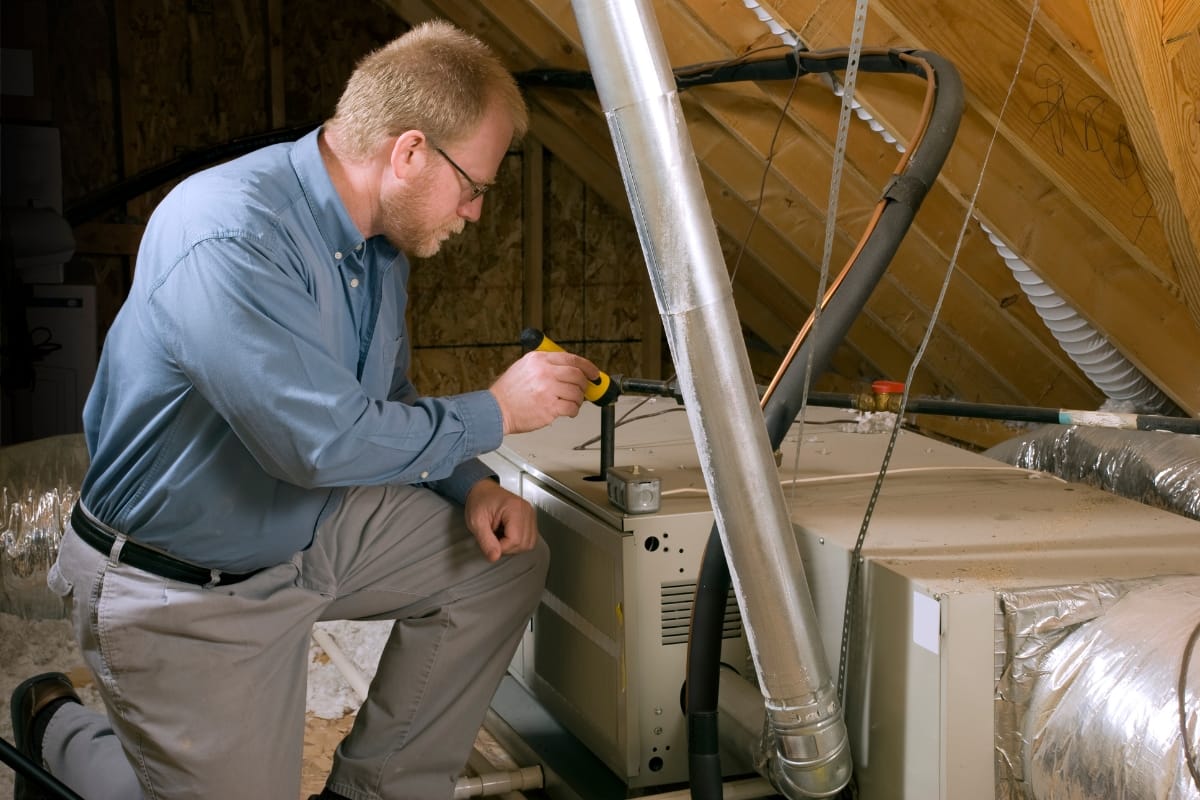
Tracking the frequency of past repairs on your furnace can reveal significant patterns in repair history and associated costs.
You’ll want to look closely at common repairs for various furnace types, as repeated issues can influence overall expenses.
This includes understanding the importance of regular inspections, as well as the potential for carbon monoxide leaks. Paying attention to these details can save you money while ensuring your system operates efficiently.
Identify Patterns in Repair History and Associated Costs
Tracking the frequency of repairs on your furnace can reveal essential patterns that help you understand potential issues. If you consistently find yourself calling for maintenance related to the pilot light or combustion problems, it may indicate deeper complexities in your system, like a faulty valve.
Frequent repairs not only strain your wallet but can also signal a need for a more reliable unit, ultimately enhancing your home’s comfort.
Additionally, evaluating your repair history can uncover trends in the types of issues you face. If you repeatedly address similar concerns, such as adjustments needed for your combustion process, it might be time to rethink your maintenance approach.
Knowing the specific problems your furnace faces can empower you to make informed decisions, whether it’s repair or replacement, resulting in better overall efficiency and reduced future repair costs.
| Repair Type | Frequency | Associated Costs |
|---|---|---|
| Pilot Light Issues | Often | Moderate |
| Combustion Problems | Sometimes | High |
| Valve Replacements | Rarely | High |
| Regular Maintenance | Typically | Low |
Analyze Common Repairs for Specific Furnace Types
Different furnace types can lead to a range of common repairs that impact your overall expenses. For instance, if you have a natural gas furnace, you might frequently run into issues with the flame sensor or gas valve. Regularly switching out these components can prevent inefficient operation and costly service calls down the line.
On the other hand, electric furnaces often deal with problems related to the heating elements or limit switches. If the limit switch fails, your system might overheat, leading to unnecessary repair costs.
Understanding these specific issues helps you be proactive, ensuring your climate stays comfortable without breaking the bank. Here’s a quick list of common repairs for various furnace types:
- Flame sensor adjustments for natural gas models
- Gas valve replacements in case of failure
- Heating element repairs in electric furnaces
- Limit switch replacements to avoid overheating
Discuss How Repeated Issues Affect Overall Expenses
Repeated issues with your furnace can quickly add up to significant expenses over time. For example, if you’re dealing with constant problems related to the heat exchanger or poor airflow, your system has to work harder to maintain comfort. This increased effort can raise your utility bills and lead to more frequent service calls, impacting your budget.
Consider how humidity levels in your home may be affected by ongoing furnace issues. If the attic isn’t properly insulated, for instance, your furnace might struggle to regulate temperature effectively.
Investing in a reliable brand with fewer repeated problems can ultimately save you both time and money in the long run.
| Repair Type | Frequency | Associated Costs |
|---|---|---|
| Heat Exchanger Issues | Often | High |
| Poor Airflow | Sometimes | Moderate |
| Humidity Control Problems | Rarely | Low |
| Regular Maintenance | Typically | Low |
Frequent repairs can strain your patience and your wallet. Shift your focus to what fuels your furnace; it can change everything.
Consider the Type of Fuel Your Furnace Utilizes for Repairs
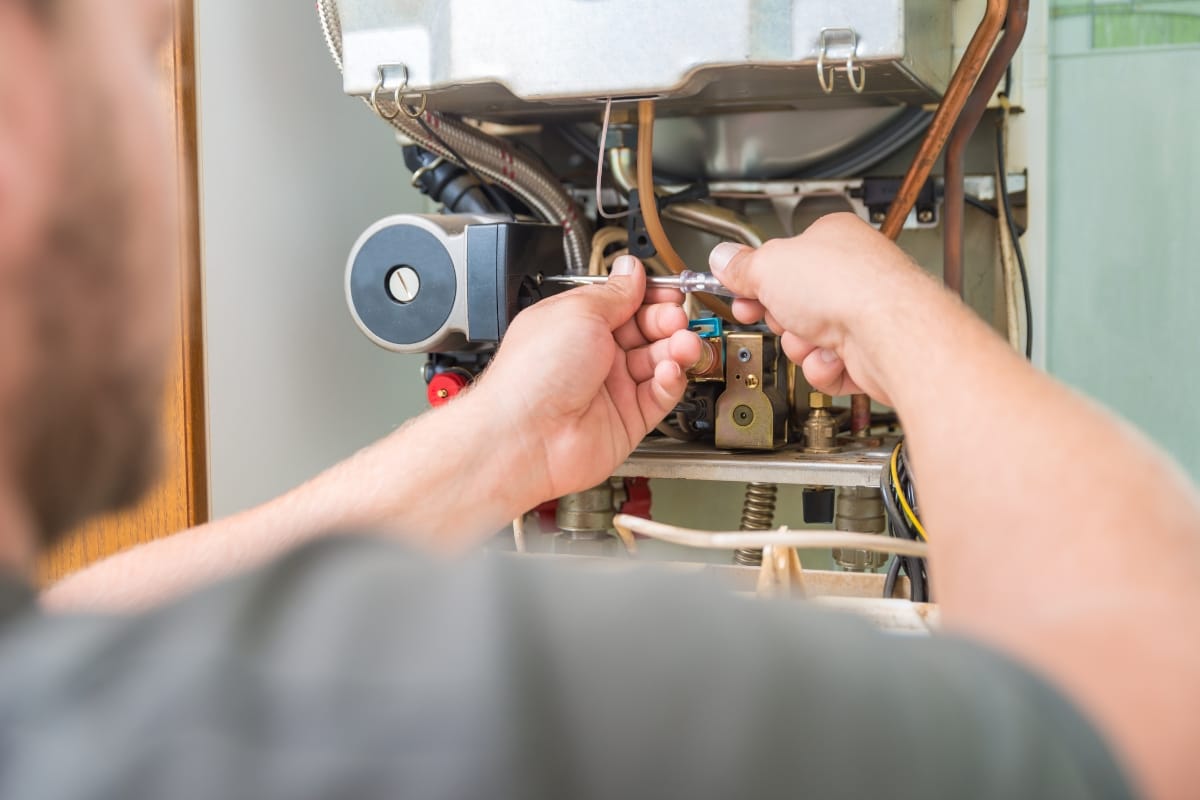
When it comes to furnace repair expenses, the type of fuel your heating system uses plays a significant role.
Gas, electric, and oil furnaces each have unique repair costs, influenced by component wear and the availability of necessary parts. You’ll find that sensor issues, dust buildup, and noise can vary based on your fuel source, affecting your investment decisions.
Understanding these factors will help you navigate potential repairs more effectively. Get ready to dive into how each fuel type influences repair needs, costs, and what to expect when maintenance time rolls around.
Compare Repair Costs Between Gas, Electric, and Oil Furnaces
When comparing repair costs between gas, electric, and oil furnaces, there are key differences that can influence your overall expense.
Gas furnaces often require specific maintenance related to pressure adjustments and venting concerns, which may lead to higher repair costs if issues arise.
In contrast, electric units typically have fewer mechanical parts, resulting in lower maintenance expenses, but you should still consider the seasonal energy efficiency ratio (SEER) as an indicator of long-term savings.
Oil furnaces come with their own set of challenges, particularly in managing fuel supply and ensuring proper ventilation. Repairs on oil systems can be costly due to the need for regular cleaning and maintenance to prevent buildup and inefficiencies.
Understanding these variations can help you make informed home improvement choices when planning your heating system or addressing existing issues, ensuring your investment remains as efficient as possible.
Understand How Fuel Type Influences Component Wear
The type of fuel your furnace uses directly impacts component wear and tear. Gas furnaces may experience wear on their pressure switches due to the constant need to regulate gas flow and pressure.
If these components aren’t regularly checked, you could face increased repair costs and safety issues, particularly with things like carbon monoxide leaks. Staying aware of these potential problems can help you plan your maintenance budget better.
On the other hand, electric furnaces typically involve fewer mechanical parts, which generally makes them easier to maintain and less prone to wear.
However, they do still require attention to minor components that can wear out over time, like the thermostat. As you consider how long your system will last, its life expectancy based on fuel type should influence your choices.
Remember, factoring in repair accessibility can lead to better decision-making about repairs versus investing in a newer, more efficient heating system:
| Furnace Type | Common Wear Issues | Impact on Repair Costs |
|---|---|---|
| Gas Furnace | Pressure switch, gas valves | Higher costs if not maintained |
| Electric Furnace | Heating elements, thermostat | Generally lower costs |
| Oil Furnace | Fuel supply issues | Can be costly to maintain |
Investigate Availability of Parts Based on Fuel Sources
When considering repairs for your furnace, the availability of parts based on the fuel source can be crucial. Gas furnaces, for instance, often require specific parts like gas valves and pressure switches.
If these components fail, securing replacements may be challenging, particularly if the furnace model is older. In such cases, working with an HVAC professional can streamline the process, ensuring you get the right parts quickly and efficiently to avoid safety risks like carbon monoxide leaks.
On the other hand, electric furnaces typically have fewer mechanical components, which tend to be easier to find and replace. If you’re experiencing issues with elements or thermostats, an experienced furnace technician can assist in locating and installing new parts without the long wait.
Being proactive about furnace installation or replacement can also save you from extended downtime and additional emergency repair costs down the line, keeping your home comfortable year-round.
Knowing the fuel your furnace uses is just the beginning. Next, you’ll want to take a closer look at how complex your furnace system is and what that might mean for your costs.
Inspect the Complexity of Your Furnace System for Pricing
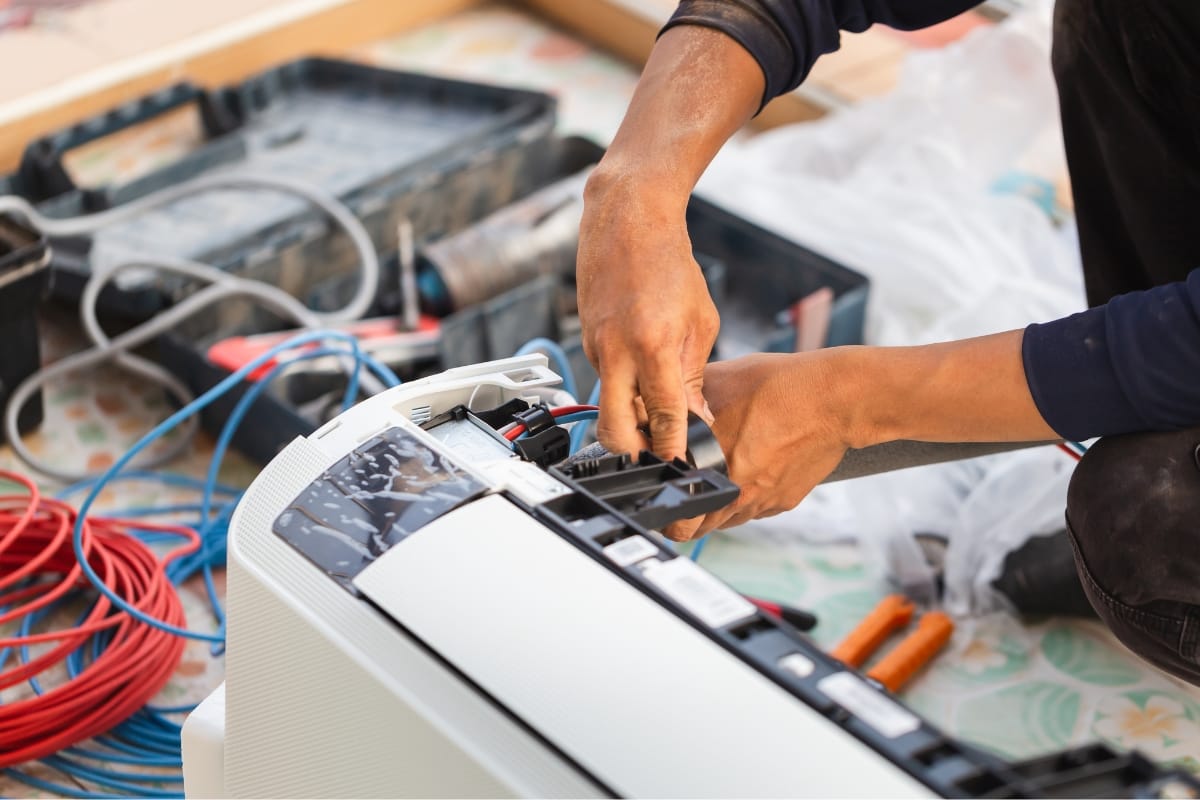
Understanding the complexity of your furnace system plays a key role in determining repair costs. Standard systems tend to require straightforward furnace repair services, while advanced units may need specialized attention, particularly for heat exchanger repairs.
More features often mean more potential issues, leading to higher expenses. You’ll also want to evaluate if specialized technicians are necessary for these complex setups, ensuring you get the right support when you schedule online for furnace maintenance.
Define the Differences Between Standard and Advanced Systems
Standard furnace systems usually have a straightforward design and are easier to understand and repair. Because they often require less specialized knowledge for maintenance, furnace repairs generally cost less.
These systems typically handle basic heating and cooling needs without extensive features, making regular upkeep more manageable.
On the flip side, advanced systems often come with complex functions that require specialized HVAC installation and ongoing maintenance. These systems might include features like variable speed fans, multiple heating zones, or smart technology that enhances efficiency and comfort.
While you may enjoy improved performance and efficiency, keep in mind that when it comes to repairs, especially in cases like denver furnace repair, costs can run higher due to the need for expert technicians who can navigate the intricate components and systems.
Recognize How More Features Can Lead to Higher Repair Costs
More features in your heating system can lead to increased repair costs. If your furnace has advanced technology, like variable speed fans or smart thermostats, it may require specialized HVAC technicians for repairs.
While these features enhance efficiency, they can also complicate maintenance and service, since not every technician may be skilled in dealing with intricate systems.
Understanding how your cooling system and heating components work together can help you budget for potential expenses.
For instance, if your unit frequently has issues with its complex parts, you’ll want to anticipate higher service costs, especially if those features fail. Investing in a reliable furnace service plan can help offset these costs while keeping your system running smoothly.
- Advanced features may require specialized HVAC technicians.
- Complex systems can complicate maintenance and service.
- Budgeting for repairs is essential for advanced furnace technology.
- A reliable furnace service plan can reduce overall expenses.
Evaluate the Need for Specialized Technicians for Complex Systems
When faced with a complex furnace system, you might find yourself needing specialized technicians for repairs. These advanced systems often come with features that require expert knowledge, making it crucial for you to hire professionals who can navigate these intricacies.
Choosing the right technician can significantly influence your furnace repair cost, especially if you’re considering HVAC replacement or a furnace replacement.
If you’re replacing any components of a complex furnace, having a specialist can save you time and money in the long run. They understand the specific needs of your system, ensuring precise repairs that keep everything running smoothly.
By investing in skilled technicians now, you can avoid more extensive issues down the road, minimizing overall expenses related to furnace repair and replacement.
Understanding your furnace’s quirks helps you grasp the repair costs. Now, consider how the local market shapes these prices and what that means for you.
Analyze the Regional Market and Its Effect on Repair Pricing
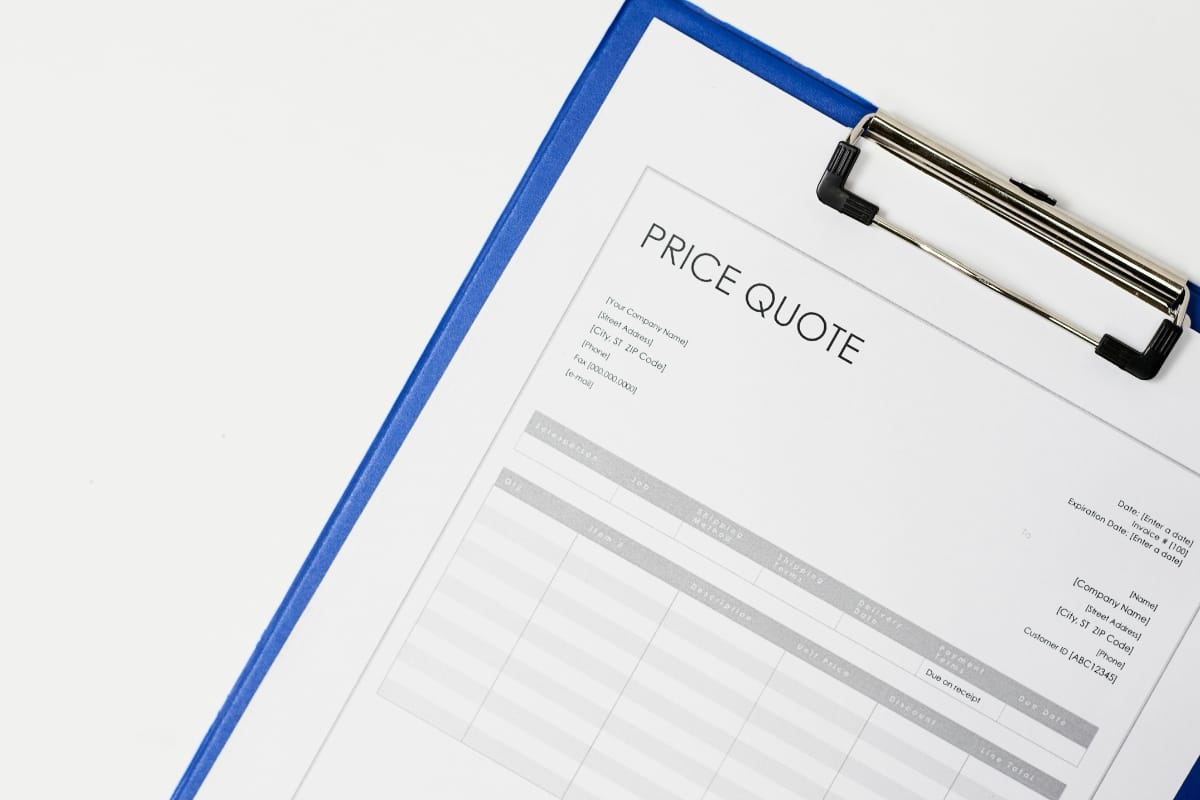
Your geographical location significantly shapes the service fees you can expect for furnace repairs. For instance, local competition can drive prices down, while areas with fewer service providers might see higher costs.
Seasonal variations also play a role, as demand can spike during cold months, raising your expenses. Understanding these factors helps you anticipate wear and tear risks, ensuring you’re prepared for potential transformer or stove issues.
Explore How Geographical Location Impacts Service Fees
Your geographical location can significantly impact the service fees you encounter for furnace repairs. For instance, if you live in an area with a higher population density, you may notice better competition among HVAC companies, which can lead to lower prices.
On the other hand, in more remote areas where the nearest technician might be miles away, costs can inflate due to the demand for service and the convenience factor, especially if you’re dealing with an evaporator issue during a cold snap.
Additionally, the specifics of your zip code might also come into play when it comes to local rebates or assistance programs that help offset repair costs.
If your region has an interest in promoting energy efficiency, certain repairs or upgrades may qualify for state-sponsored rebates, mitigating some of those expenses.
Furthermore, keep in mind that access to crawl spaces can affect labor costs; if accessing your furnace requires navigating a tight or messy crawl space, it may lead to increased fees as well. Understanding these factors can help you better prepare for potential repair costs down the road.
Determine the Influence of Local Competition on Prices
Local competition among HVAC companies can significantly affect the prices you encounter for furnace repairs.
When multiple technicians are vying for your business, they may offer competitive rates to attract customers. This can translate into more affordable options for you, especially when addressing maintenance issues, whether it’s fixing your furnace flue or servicing your humidifier to ensure optimal performance.
Taking advantage of this competition not only saves you money but also encourages better service as companies strive to earn your trust and satisfaction.
On the other side of things, if you live in an area with fewer HVAC providers, you might see higher prices due to limited options and increased demand.
In these situations, it’s essential to weigh your options carefully. If you have a specific issue with your furnace that requires attention, like a refrigerant leak or regular maintenance, you may need to budget for elevated service fees.
Understanding the local market dynamics can help you make informed choices, ensuring you get the best repair service possible without overspending.
Research Seasonal Variations in Repair Costs
Seasonal changes can have a big impact on furnace repair costs. During colder months, the demand for heating solutions rises, leading to increased service requests.
This spike in demand can result in higher rates for repairs and maintenance, especially if your system needs urgent attention. If you’re dealing with problems like soot buildup in your fireplace or mold issues due to poor ventilation, it’s wise to schedule any necessary repairs ahead of the busy season to save money.
In the warmer months, you might find that services related to condensers and dehumidifiers are more in demand. This is when HVAC companies often shift focus to cooling systems.
If your heating system isn’t prepared before the heating season starts, you might face rush charges during peak times. To keep your expenses down, regular maintenance throughout the year is essential, ensuring your furnace runs efficiently when you need it the most:
| Season | Typical Issues | Repair Cost Influences |
|---|---|---|
| Winter | Soot in fireplace, mold | Higher demand leads to increased rates |
| Summer | Condenser, dehumidifier | Focus shifts to cooling systems |
Repair prices can leave you wondering where your money goes. Warranty coverage can be the key to understanding those costs and saving you cash down the line.
Explore Warranty Coverage and Its Role in Repair Expenses

Warranties are a great safety net when it comes to managing your furnace repair costs. Typically, components like the limit switch and flue pipe are covered under warranty, helping you avoid unexpected expenses.
However, be cautious—certain conditions could void your coverage, which is crucial to understand to safeguard your investment. Let’s take a closer look at what’s covered, how warranties can ease financial pressure, and what actions risk nullifying your warranty.
Identify What Components Are Typically Covered Under Warranty
When it comes to warranty coverage, certain components of your furnace are usually included. Common parts that are often covered include the limit switch, flue pipe, and various electrical components.
Understanding what’s included in your warranty helps you avoid unexpected expenses, especially when odors or other issues arise that might signal a failure.
Warranties generally cover a percentage of parts and labor, which can significantly reduce your out-of-pocket costs when repairs are necessary. Depending on where you live, checking with resources like HomeAdvisor can provide insights into warranty options and what other homeowners have experienced.
This way, you’re better equipped to make informed decisions regarding your furnace, ultimately saving you money and hassle down the line:
- Limit switch
- Flue pipe
- Electrical components
- Coverage percentages
- Useful resources like HomeAdvisor
Discuss How Warranties Can Mitigate Unexpected Repair Costs
Warranties can be a real lifesaver when it comes to managing unexpected repair costs for your heating system.
For example, if a crucial part of your boiler or pellet stove fails, having a warranty means you don’t have to dip into your home equity just to cover those expenses. This financial cushion allows you to maintain your indoor air quality without stressing over how to pay for repairs.
Moreover, warranties often cover significant components of your system, including essential parts that affect efficiency and comfort. If any repairs related to your air purifier or heating unit are needed, warranties typically reduce your out-of-pocket costs substantially.
Understanding what your warranty covers can empower you to take proactive steps in maintaining your system, ensuring a cozy home without the burden of surprise bills.
Learn About Conditions That Void Warranty Coverage
When it comes to warranties, understanding the conditions that can void them is essential for safeguarding your investment in your heating system.
For instance, if you’re using an unsupported renovation technique or running your furnace on a circuit breaker that isn’t adequate, you could risk losing coverage. Many warranties require that installations and repairs are performed by certified professionals, so DIY fixes may also jeopardize your protection.
Additionally, keeping an eye on the model’s energy efficiency is important. If you modify or replace parts with non-Energy Star rated components, it might not only affect the warranty but could also lead to higher utility costs.
Always check the warranty terms and work with certified technicians to ensure you’re protected, so you won’t have to rely on a home equity loan or other financing options to cover unexpected repair expenses down the road.
Frequently Asked Questions
How does the age of my furnace affect repair costs?
The age of your furnace significantly impacts repair costs; older units typically require more frequent repairs and may need outdated parts, leading to higher expenses. Investing in a newer model often proves more cost-effective and reliable.
What impact does the frequency of past repairs have on expenses?
Frequent past repairs can lead to increased expenses due to accumulated issues, possible inefficiencies, and the risk of major breakdowns. Over time, consistent maintenance is more cost-effective than emergency repairs or replacements.
How does the type of fuel used influence repair pricing?
The type of fuel used directly affects repair pricing, as different systems have unique parts and maintenance needs. For instance, gas systems may require specific components, while electric units involve different repairs, impacting overall costs.
How does the complexity of my furnace system affect repair costs?
The complexity of your furnace system directly impacts repair costs, as intricate systems require specialized knowledge, tools, and time. Components like advanced thermostats or multi-stage heat pumps may incur higher expenses due to their unique service needs.
What role does regional market pricing play in furnace repairs?
Regional market pricing significantly impacts furnace repairs by influencing service costs, availability of parts, and labor rates. Understanding these factors helps customers make informed decisions while ensuring fair pricing and quality repairs from trusted HVAC providers like CoolPro.
Conclusion of the Cost of Furnace Repairs
Understanding the factors that impact furnace repair costs can help you make informed decisions and avoid unexpected expenses. When your furnace needs attention, trust the experts at CoolPro Heating & Cooling to deliver reliable, affordable service that ensures your home stays warm and comfortable.
Contact us at 770-694-6232 or send us a message through our site form to book a service request. Don’t wait—let CoolPro Heating & Cooling handle all your furnace repair needs with professionalism and care!

